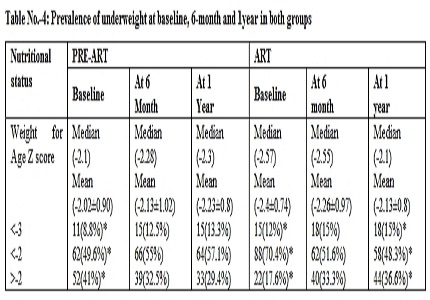Effect of dengue fever on the total leucocyte count and neutrophil count in children in early febrile period
Abstract
Introduction: Dengue is an arboviral disease caused by flavivirus. In India, the incidence of dengue fever is on a rise every year. The course of illness is different for each patient. Therefore early measurement of laboratory parameters can guide to the management of the disease.
Aim of the study: 1) To study the effect of dengue fever on the total leucocytecount (TLC) in children in early febrile period. 2) To determine the neutrophil count in early stage of dengue fever. Study
design: Observational study.
Methodology: Patients of 1-14 years age group, who presented with fever of recent duration were included in the study. About 80 patients with early manifestations (1-5 days) of fever were included. Dengue was suspected in 55 children who had two or more of the following symptoms- fever, pain abdomen, headache, myalgias, arthralgias, skin rash, nausea, vomiting, retroorbital pain, prostration. Out of these 55 children, 50 children who presented in early febrile period (1-5 days) and who were serologically positive for denguetook part in the study. Blood investigations were done for total leucocyte count (TLC) and neutrophil count.
Results: About 26% of the patients had leucopenia (<4000), 66% had leucocyte count in normal range (4,000-11,000) and only 8% had leukocytosis (>11,000). About 34 (68%) patients had neutrophil count of less than 40% and 16 (32%) patients had neutrophils between 40 to 80 %.
Conclusion: In early febrile period of dengue fever, majority have normal white blood cell count. Any change in the values of total leucocyte count points towards the progression of the disease towards severity. There is neutropenia in most of patients in dengue fever. Presence of neutropenia merely doesn’t determine the use of antibiotics.
Downloads
References
2. WHO. Dengue and dengue haemorrhagic fever. Factsheet No 117, revised May 2008. Geneva, World Health Organization, 2008.Available from http://www.who.int/mediacentre/factsheets/fs117/en.
3. Martina BE, Koraka P, Osterhaus AD. Dengue virus pathogenesis: an integrated view.ClinMicrobiol Rev.2009 Oct;22(4):564-81. doi: 10.1128/CMR.00035-09. [PubMed]
4. CDC.Clinical guidelines for the management of dengueinfection.Revised November 2015.US Department ofhealth and human services.GA. USA. Available from https://www.cdc.gov/dengue/clinicallab/clinical.html. Accessed October 12, 2017.
5. Kurane I. Dengue hemorrhagic fever with specialemphasis on immunopathogenesis. Comp Immunol Microbiol Infect Dis. 2007 Sep;30(5-6):329-40. Epub 2007 Jul 23. [PubMed]
6. World Health Organization (WHO). Dengue- Guidelines for Diagnosis, Treatment, Prevention and Control. Geneva, Switzerland: World Health Organization; 2009. Available fromwww.who.int/rpc/guidelines /9789241547871. Accessed October 12, 2017.
7. Rosales C, Demaurex N, Lowell CA, Uribe QE. Neutrophils: Their Role in Innate and Adaptive Immunity. Journal of Immunology Research. 2016;2016:1469780. doi:10.1155/2016/1469780.
8. Nagaram PP, Pidugu P, Munagala VK, Matli VV. Clinical and laboratory profile and outcome of dengue cases among children attending a tertiary care hospital of South India. Int J ContempPediatr. 2017;4:1074-80. doi.org/10.18203/2349-3291.ijcp20171731.
9. Mishra S, Ramanathan R, Agarwalla SK. Clinical Profile of Dengue Fever in Children: A Study from Southern Odisha, India. Scientifica (Cairo). 2016;2016(4):6391594. doi:10.1155/2016/6391594.
10. KalayanaroojS, Vaughn DW, Nimmannitya S, Green S, Suntayakorn S, Kunentrasai N, Viramitrachai W, Ratanachu-eke S, KiatpolpojS, Innis BL, Rothman AL, Nisalak A, Ennis FA. Earlyclinical and laboratory indicators of acuted engueillness. J Infect Dis. 1997 Aug;176(2):313-21. [PubMed]
11. Gregory CJ, Lorenzi OD, Colón L, García AS, Santiago LM, Rivera RC, Bermúdez LJ, Báez FO, Aponte DV, Tomashek KM, Gutierrez J, Alvarado L. Utility of the tourniquet test and the white blood cell count to differentiate dengue among acutefebrileillnesses in the emergency room. PLoSNeglTrop Dis. 2011 Dec;5(12): e1400. doi: 10.1371/journal.pntd.0001400. Epub 2011 Dec 6. [PubMed]
12. Jayanthi HK, Tulasi SK. Correlation study between platelet count, leukocyte count, nonhemorrhagic complications, and duration of hospital stay in dengue fever with thrombocytopenia. Journal of Family Medicine and Primary Care. 2016;5(1):120-123.
13. Potts JA, Rothman AL. Clinical and laboratory features that distinguish dengue from otherfebrileillnesses in endemicpopulations. Trop Med Int Health. 2008 Nov;13(11):1328-40. doi: 10.1111/j.1365-3156.2008.02151.x. Epub 2008 Sep 16. [PubMed]
14. Thein TL, Lye DC, Leo YS, Wong JG, Hao Y, Wilder-Smith A. Severe neutropenia in denguepatients: prevalence and significance. Am J Trop Med Hyg. 2014 Jun;90(6):984-7. doi: 10.4269/ajtmh.14-0004. Epub 2014 Apr 14. [PubMed]
15. Pancharoen C, Mekmullica J, Thisyakorn U. Primary dengue infection: what are the clinical distinctions from secondary infection? Southeast Asian J Trop Med Public Health. 2001;32:476–480.



 OAI - Open Archives Initiative
OAI - Open Archives Initiative


